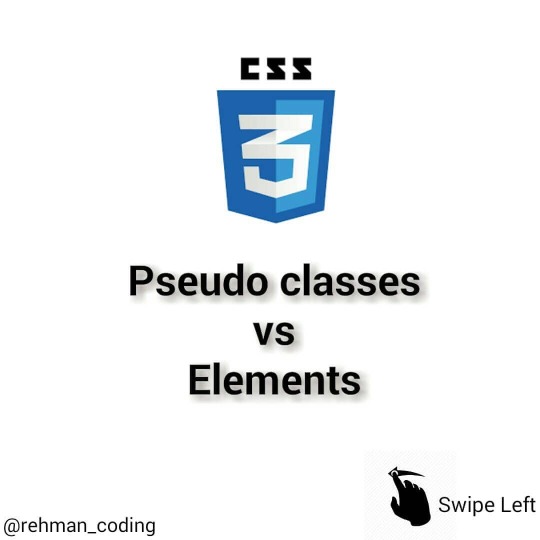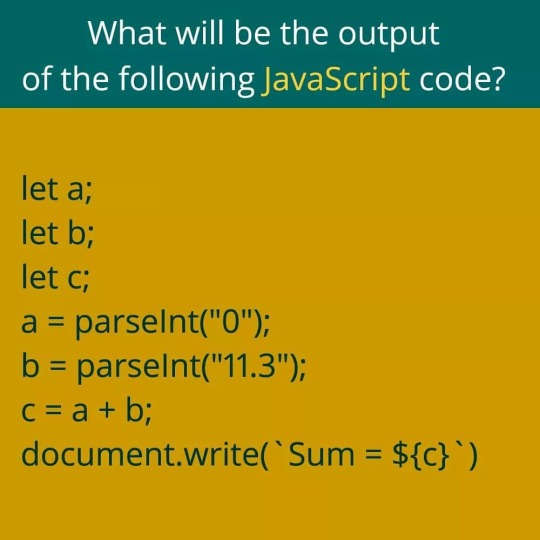#FrontendWebDesign
Explore tagged Tumblr posts
Text
Front end web developer skills you need to know
To become a successful front-end web developer, you’ll need a solid foundation in key skills. Mastering HTML & CSS is essential for creating the structure and style of websites.
JavaScript and ES6 add interactivity and modern functionality, while CSS & JS frameworks like Bootstrap and React streamline development.
Understanding GIT & GITHUB for version control and implementing responsive design ensures your projects work seamlessly across all devices.
In this article, we will review some of the key skills required for expert front web development.

Download Infographic
HTML & CSS
HTML (HyperText Markup Language) and CSS (Cascading Style Sheets) are the backbone of front-end web development. HTML structures the content of a web page, using elements like headings, paragraphs, links, and images.
CSS styles that content, controlling layout, colours, fonts, spacing, and responsiveness. Together, they allow developers to create visually engaging and well-structured websites.
Mastering HTML & CSS is crucial before moving on to more advanced topics like JavaScript or frameworks. You’ll need to understand concepts such as semantic HTML, CSS selectors, the box model, and media queries.
There are plenty of free and paid resources to help you learn. Great starting points include MDN Web Docs, W3Schools, and freeCodeCamp’s Responsive Web Design certification.
Platforms like Codecademy and Coursera also offer beginner-friendly courses. Practising by building small projects is one of the most effective ways to reinforce your learning.
JavaScript
JavaScript is a core technology of front-end web development, used alongside HTML and CSS to create dynamic, interactive websites. While HTML provides the structure and CSS handles styling, JavaScript enables user interaction by manipulating elements on the page in real-time.
It’s responsible for features such as form validation, image sliders, dropdown menus, modal windows, and dynamic content updates without reloading the page (using AJAX). JavaScript interacts with the Document Object Model (DOM), allowing developers to modify HTML and CSS based on user actions like clicks, scrolls, or keystrokes.
Modern front-end development often uses JavaScript libraries and frameworks such as React, Vue.js, or jQuery to streamline development and enhance functionality. Understanding JavaScript fundamentals is essential before diving into these tools.
There are excellent resources to learn JavaScript, whether you’re a beginner or looking to advance your skills. Top recommendations include JavaScript.info, MDN Web Docs, and freeCodeCamp. You can also find interactive tutorials on Codecademy, as well as comprehensive courses on platforms like Udemy and Coursera.
For in-depth understanding, the book Eloquent JavaScript is highly regarded in the developer community. Practising through small projects and coding challenges will solidify your knowledge.
ES6
ES6 (ECMAScript 2015) is a major update to the JavaScript language, introducing powerful new features that make coding more efficient and maintainable. It brought significant improvements to JavaScript syntax and functionality, including let and const for block-scoped variable declarations, arrow functions for cleaner, more concise function expressions, template literals for easier string formatting, and destructuring for simplifying data extraction from arrays and objects.
ES6 also introduced promises for better handling of asynchronous operations, modules for organising code into reusable components, and classes for a more structured, object-oriented approach to JavaScript development.
ES6 has become a standard in front-end web development, forming the backbone of modern frameworks like React, Vue.js, and Angular, where these features are heavily utilised to create fast, scalable, and maintainable web applications. It also improves code readability and reduces common bugs, making it an essential skill for front-end developers.
To learn ES6, great resources include MDN Web Docs, JavaScript.info, freeCodeCamp’s JavaScript course, and Codecademy’s interactive tutorials. The book Eloquent JavaScript also covers ES6 in depth, while platforms like Udemy and Coursera offer structured courses for more in-depth learning. Practising with real-world projects is the best way to master ES6.
CSS & JS Frameworks
CSS and JavaScript frameworks play a vital role in front-end web development by streamlining the coding process and reducing development time.
CSS frameworks like Bootstrap, Tailwind CSS, and Foundation provide pre-written CSS classes and components for creating responsive layouts, navigation menus, buttons, and more. They help ensure consistent design and save developers from writing repetitive code.
JavaScript frameworks such as React, Vue.js, and Angular offer structured approaches to building interactive user interfaces and managing complex application states. These frameworks simplify DOM manipulation, improve performance, and enable the creation of reusable components.
By using these frameworks, developers can build modern, responsive, and scalable web applications more efficiently.
To learn CSS frameworks, explore the official documentation for Bootstrap or Tailwind CSS, as well as tutorials on freeCodeCamp and W3Schools. For JS frameworks, the React and Vue.js official docs, MDN Web Docs, Codecademy, and Scrimba offer excellent learning paths.
GIT & GITHUB
GIT and GitHub are essential tools for front-end web developers, enabling efficient version control and collaboration. GIT is a distributed version control system that tracks code changes, allowing developers to manage project history, revert to earlier versions, and work on multiple features simultaneously using branches.
GitHub is a cloud-based platform that hosts GIT repositories, making it easy for developers to collaborate, share code, and contribute to open-source projects. It also offers features like pull requests, code reviews, and issue tracking to streamline development workflows.
In front-end web development, GIT and GitHub are used to manage code for websites and applications, ensuring version control and seamless collaboration. They also make it easy to showcase projects in a professional portfolio.
To learn GIT and GitHub, consider GitHub Learning Lab, freeCodeCamp, Codecademy, and MDN Web Docs. Platforms like GitHub Docs and GitKraken also provide excellent guides and tutorials for beginners.
Responsive Design
Responsive design is a crucial aspect of front-end web development, ensuring that websites look and function well across a wide range of devices, from mobile phones to large desktop screens.
It focuses on creating flexible layouts, images, and components that automatically adjust to different screen sizes and orientations. This approach enhances user experience, boosts SEO, and reduces bounce rates by delivering a consistent browsing experience, regardless of the device.
Responsive design relies on key techniques like media queries, flexbox, and CSS grid to control the layout and structure of a website. Fluid grids and responsive images ensure content scales appropriately, while mobile-first design prioritises smaller screens before scaling up to larger devices.
Many front-end frameworks, like Bootstrap and Tailwind CSS, include built-in responsive design features, making it easier to create flexible layouts.
In modern front-end development, responsive design is essential, as mobile traffic continues to grow. It’s a core requirement for building professional websites and web applications.
To learn responsive design, consider resources like MDN Web Docs, W3Schools, and freeCodeCamp’s Responsive Web Design certification.
Books like Responsive Web Design with HTML5 and CSS by Ben Frain and platforms like Codecademy also offer comprehensive tutorials.
Building small projects and experimenting with media queries is a practical way to master this vital skill, ensuring your web pages deliver a seamless experience across all devices.
Conclusion
Mastering front-end web development skills like HTML & CSS, JavaScript, ES6, CSS & JS frameworks, GIT & GitHub, and responsive design is essential for building modern, high-performing websites.
These skills form the foundation of interactive, responsive, and visually appealing web pages. By leveraging powerful frameworks and adopting best practices, you can streamline your workflow and create exceptional user experiences.
With countless online resources available, from MDN Web Docs to freeCodeCamp, there’s never been a better time to start your front-end development journey. Keep practising, stay curious, and continue expanding your skill set to become a proficient developer.
Article first published: https://dcpweb.co.uk/blog/front-end-web-developer-skills-you-need-to-know
0 notes
Text
HTML (HyperText Markup Language) is the foundation of web development and is used to create and structure web pages. It consists of elements enclosed in tags that define how content is displayed in a web browser.
#HTML#WebDevelopment#FrontendDevelopment#TechEducation#HTML5#TechBooks#HTMLForBeginners#MarkupLanguage#WebDesign#TechLearning#HTMLTags#WebAppDevelopment#WebDesignSkills#HTMLStructure#ResponsiveDesign#HTMLForms#HTMLCSS#WebDevelopmentTutorial#HTMLBestPractices#TechTutorial#WebDesignTips#HTMLElements#MobileFirstDesign#FrontendWebDesign#HTMLSyntax#SEOOptimization
0 notes
Photo

Pseudo-classes (:) allow you to style the different states of an element e.g. when you hover over it, when it is disabled, when it is the first child of its parent, etc. Pseudo-elements (::) allow you to style different parts of an element e.g. the first line, the first letter, inserting content before or after, etc. Originally they all used a single colon, but CSS3 introduced the double colon to separate the two. #javascript #javascriptbook #learnjavascript #javascriptforbabies #javascriptislife #javascriptprogrammer #javascripters #frontendwebdesign #frontenddeveloper #frontendeveloper #frontenddevelopment #frontendfriday😎 #frontendunited #frontenders #frontendfridays #frontendchallenge #frontendwebdeveloper #frontendthursday #frontendwebdevelopment #frontendconf #frontendmagazine #frontendswap #frontend #frontendfriday🔥 #frontenddev #frontendsunday #frontendfriday #frontendfridre #frontendengineering https://www.instagram.com/p/B7fmlqKgLbx/?igshid=16ps20dxwoqmd
#javascript#javascriptbook#learnjavascript#javascriptforbabies#javascriptislife#javascriptprogrammer#javascripters#frontendwebdesign#frontenddeveloper#frontendeveloper#frontenddevelopment#frontendfriday😎#frontendunited#frontenders#frontendfridays#frontendchallenge#frontendwebdeveloper#frontendthursday#frontendwebdevelopment#frontendconf#frontendmagazine#frontendswap#frontend#frontendfriday🔥#frontenddev#frontendsunday#frontendfriday#frontendfridre#frontendengineering
0 notes
Link
#frontendwebdesign#frontenddeveloper#uidesign#uiux#uiuxdesign#adobexd#appdesign#uiuxdesigner#art#create#portfolio#designer#html#uidesigner#artist#gamedesigner#developer#java#webdesign#programming#programmer#programmers#webdeveloper#webdevelopment#web#javascript
0 notes
Video
youtube
💯 Mình có 20 khóa học online muốn tặng các bạn ❤️ Hãy truy cập vào trang web này để nhận nhé 🎁 https://gioi.net 📢 Bạn hãy like video này để xem lại lúc cần 👏 ● Giới thiệu một số thuộc tính trong CSS ● Đăng ký kênh: http://bit.ly/tusachvang ● Like trang: https://ift.tt/2Glbdqp ✪ Profile: https://ift.tt/2GkUVOg ✪ Fanpage: http://fb.com/seoimk ✪ Đặt vé máy bay: http://vnbay.vn ► Thông tin người hướng dẫn: Nguyễn Hải Trung ► CEO Công ty TNHH Du Lịch Ngọc Thiên Ngân ► Zalo: 0888.888.441 ► Facebook: datmatrung #htmlcssjs #cssproperty #grid #cssgrid #cssgridlayout #javascript #cssproject #webdevelopment #webdesign #webdeveloper #developer #webstuff #webdeveloperlife #webprogramming #webdevs #programming #programmer #coding #coder #miniproject #project #frontendwebdeveloper #frontend #frontendwebdesign #htmlcssproject #csssnippets #cssanimation #css3 #css #uxui by Nguyễn Hải Trung
0 notes
Text
CSS (Cascading Style Sheets) is a styling language used to control the appearance of HTML elements. It allows developers to separate content from design, making web pages more visually appealing and easier to maintain.
#CSS#WebDevelopment#FrontendDevelopment#WebDesign#CSS3#TechEducation#CSSForBeginners#TechBooks#CSSStyling#CSSGrid#CSSFlexbox#ResponsiveDesign#WebAppDevelopment#CSSAnimation#CSSLayout#TechLearning#UIUXDesign#WebDesignTips#CSSBestPractices#TechTutorial#FrontendWebDesign#CSSDesign#WebDesignSkills#CSSVariables#MobileFirstDesign#CSSFramework#HTMLCSS
0 notes
Text
Are you ready to master Bootstrap 4 and take your front-end development skills to the next level? Whether you're a beginner or someone looking to enhance your web design skills, you've come to the right place! This free course by Asad Mukhtar will guide you through everything you need to know about Bootstrap 4, from layout to components.
#Bootstrap4#Bootstrap#WebDevelopment#FrontEndDevelopment#ResponsiveDesign#TechEducation#WebDesign#CSSFramework#TechBooks#WebDesignTutorial#BootstrapCourse#BootstrapTutorial#FrontendWebDesign#Bootstrap4Course#HTML5#CSS3#WebDevelopmentCourse#TechLearning#MobileFirstDesign#WebDesignSkills#BootstrapComponents#UIUXDesign#WebAppDevelopment#WebDesignBestPractices#BootstrapTips#WebDevelopmentSkills
0 notes
Photo

#javascript #javascriptbook #learnjavascript #javascriptforbabies #javascriptislife #javascriptprogrammer #javascripters #frontendwebdesign #frontenddeveloper #frontendeveloper #frontenddevelopment #frontendfriday😎 #frontendunited #frontenders #frontendfridays #frontendchallenge #frontendwebdeveloper #frontendthursday #frontendwebdevelopment #frontendconf #frontendmagazine #frontendswap #frontend #frontendfriday🔥 #frontenddev #frontendsunday #frontendfriday #frontendfridre #frontendengineering https://www.instagram.com/p/B7fjp1dAPfr/?igshid=7ln78ar2y2fj
#javascript#javascriptbook#learnjavascript#javascriptforbabies#javascriptislife#javascriptprogrammer#javascripters#frontendwebdesign#frontenddeveloper#frontendeveloper#frontenddevelopment#frontendfriday😎#frontendunited#frontenders#frontendfridays#frontendchallenge#frontendwebdeveloper#frontendthursday#frontendwebdevelopment#frontendconf#frontendmagazine#frontendswap#frontend#frontendfriday🔥#frontenddev#frontendsunday#frontendfriday#frontendfridre#frontendengineering
0 notes